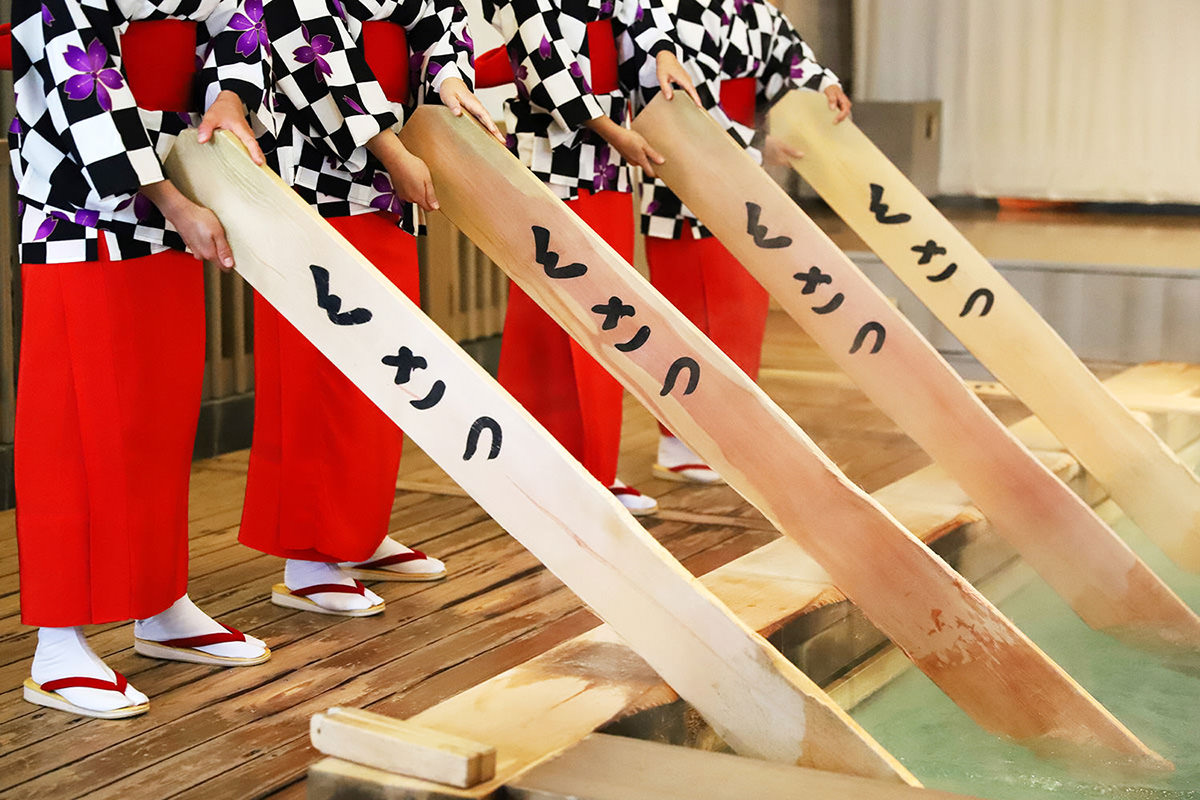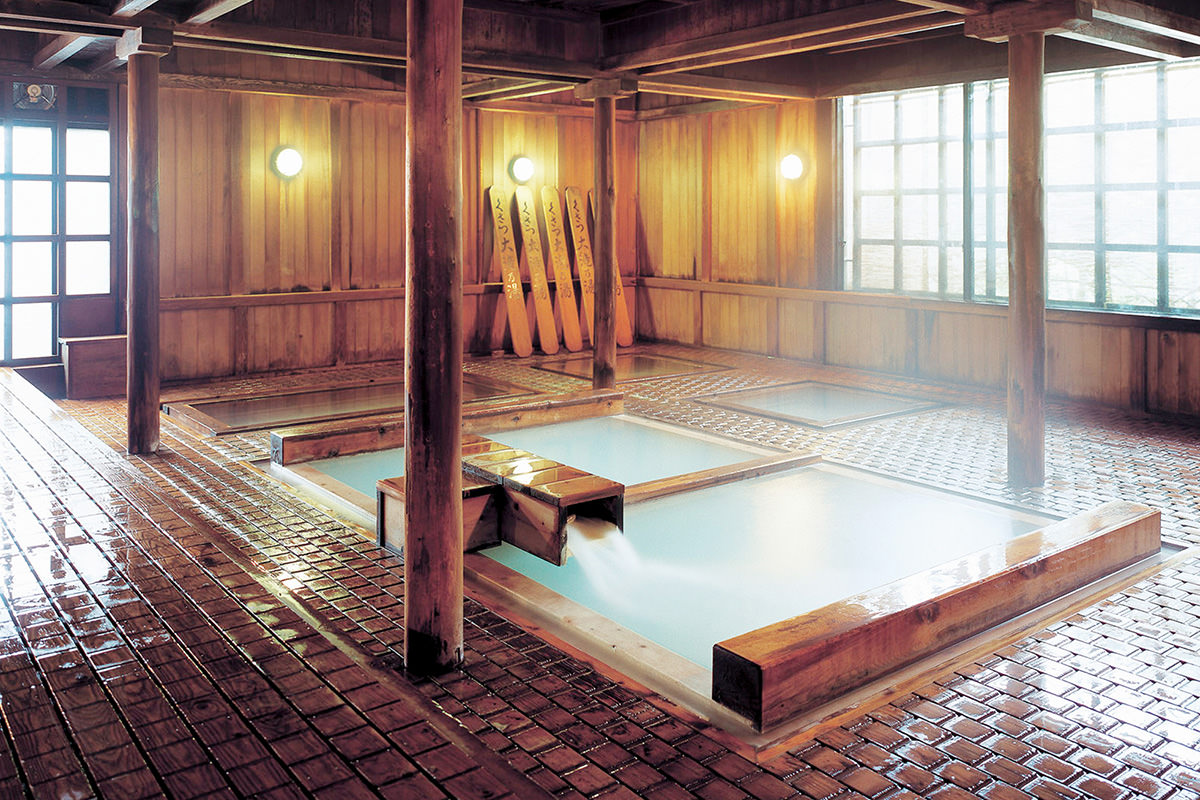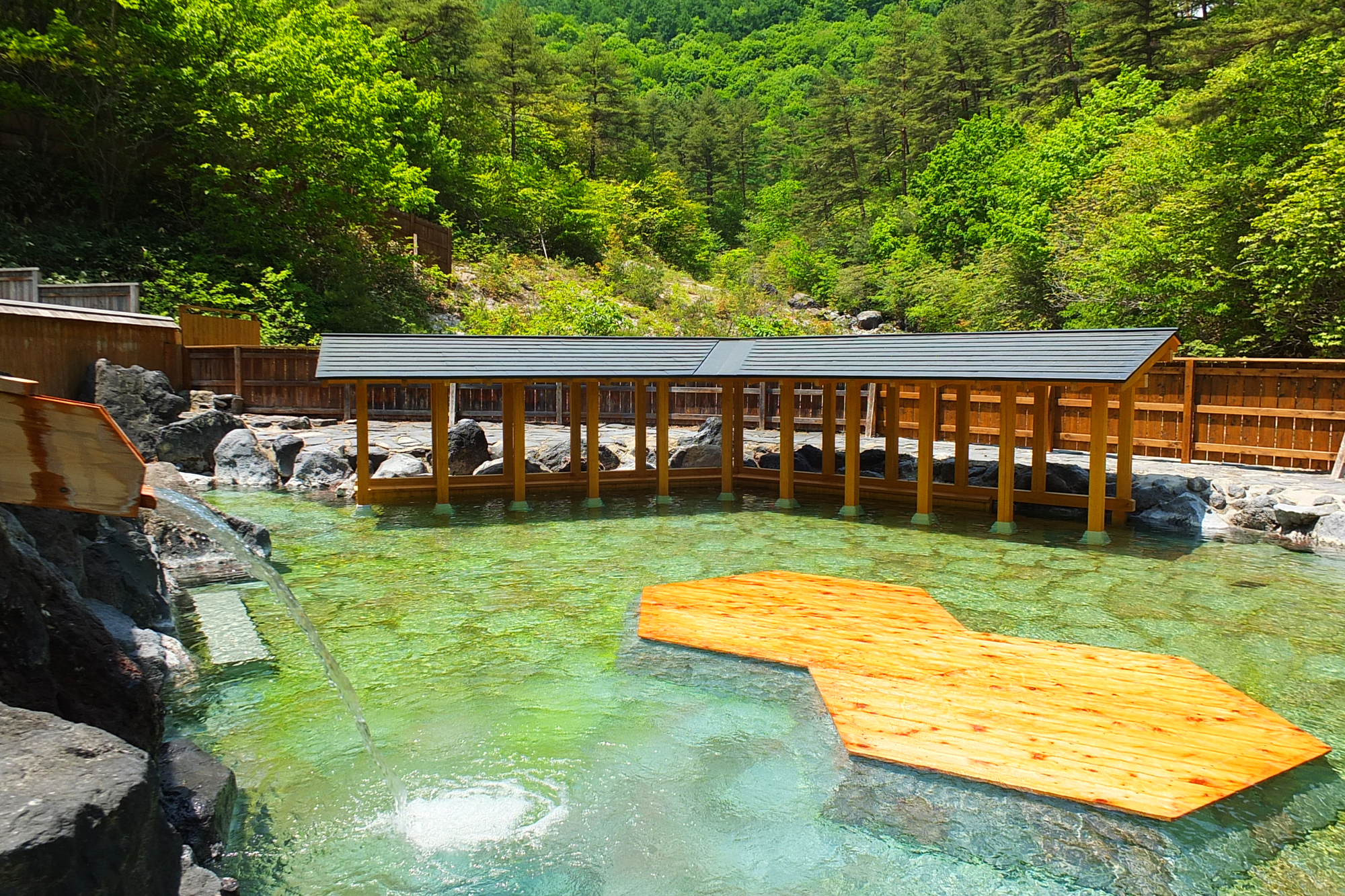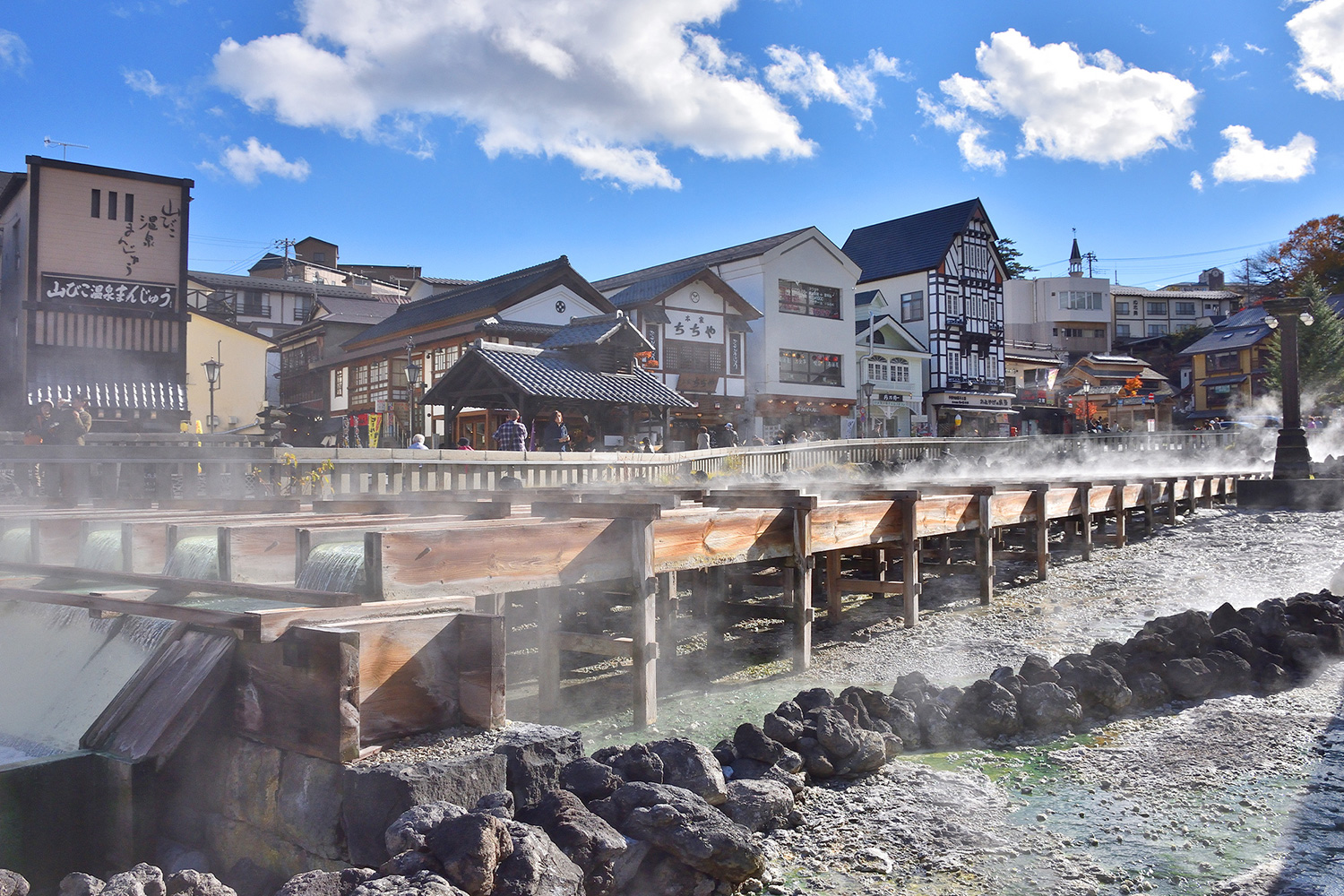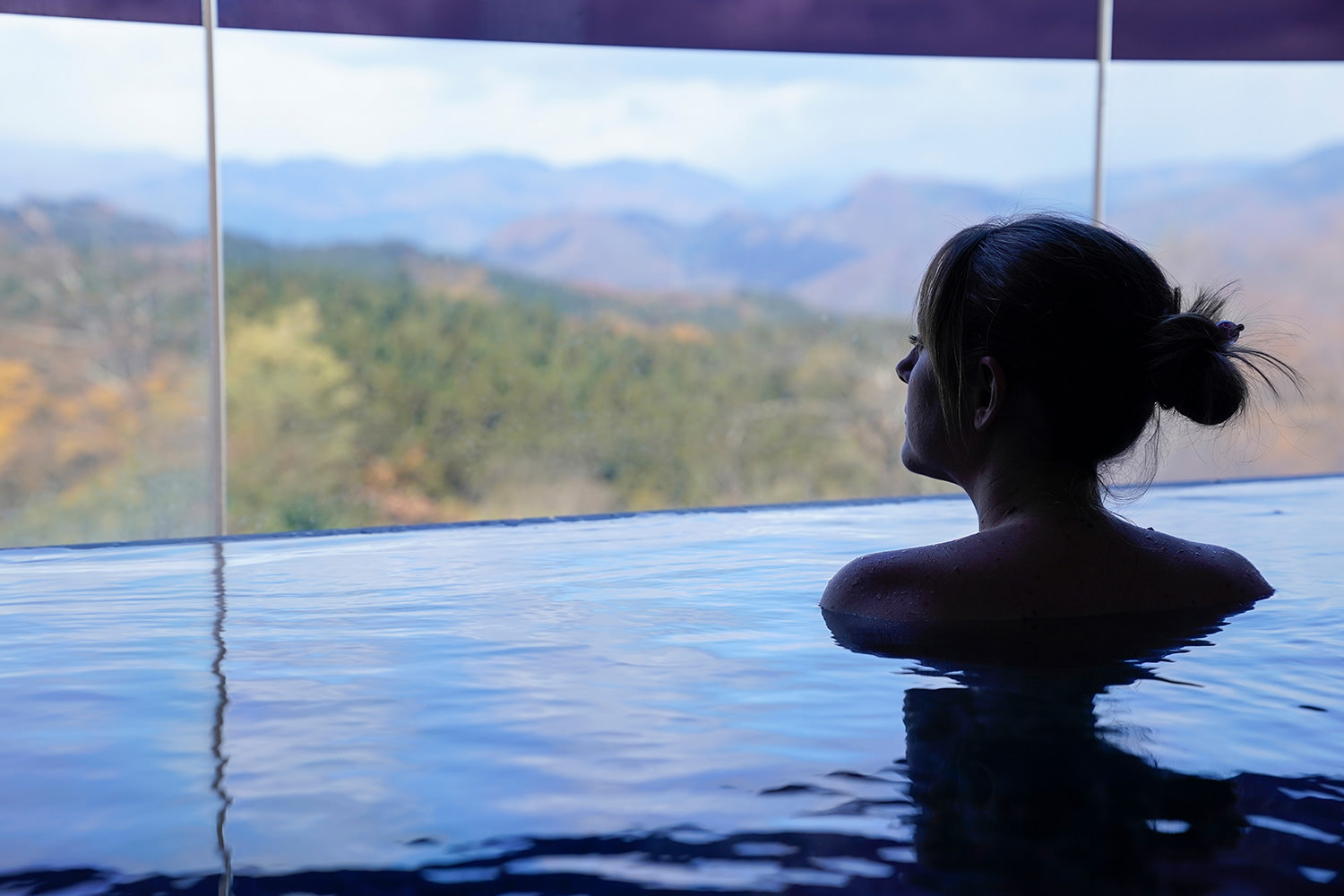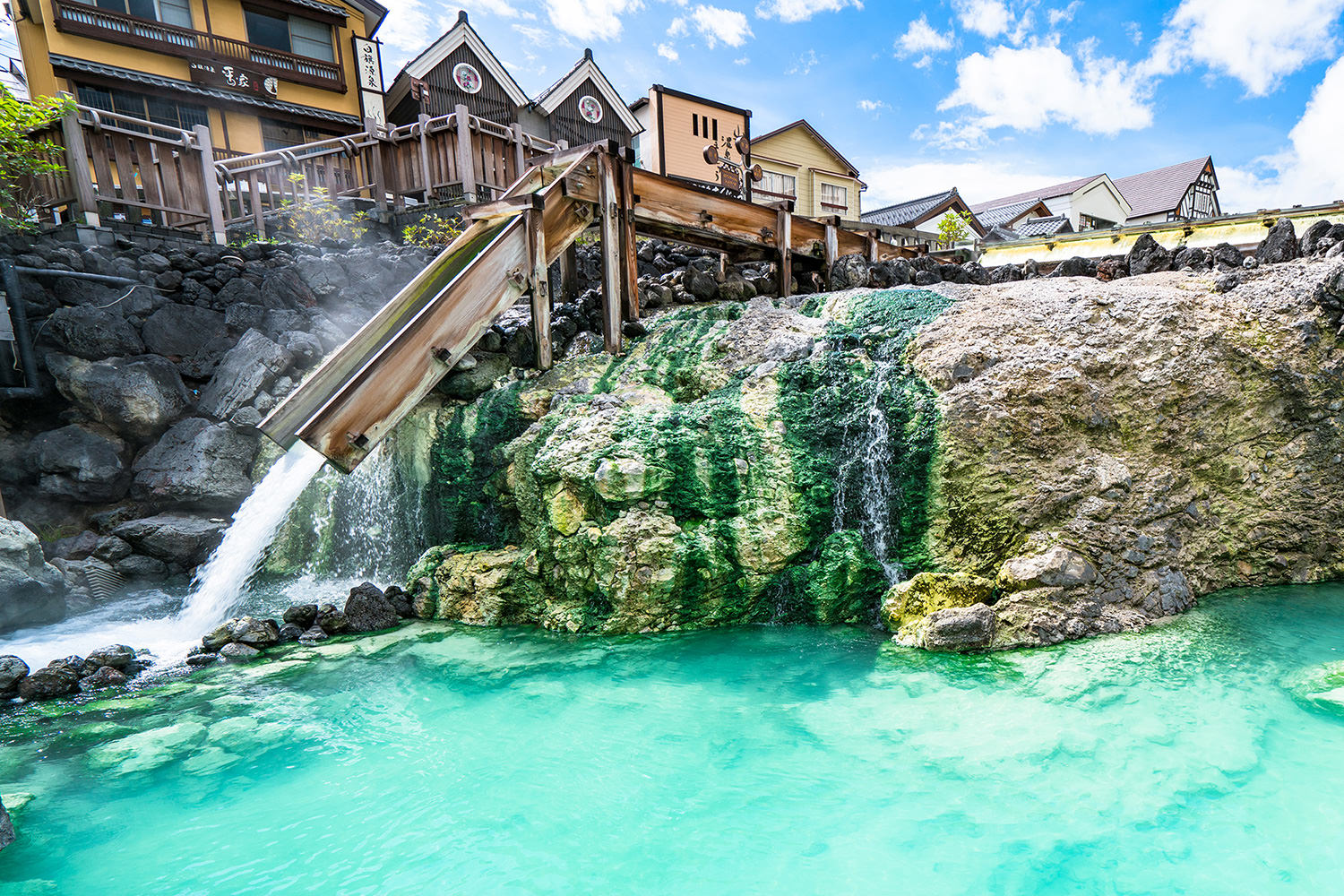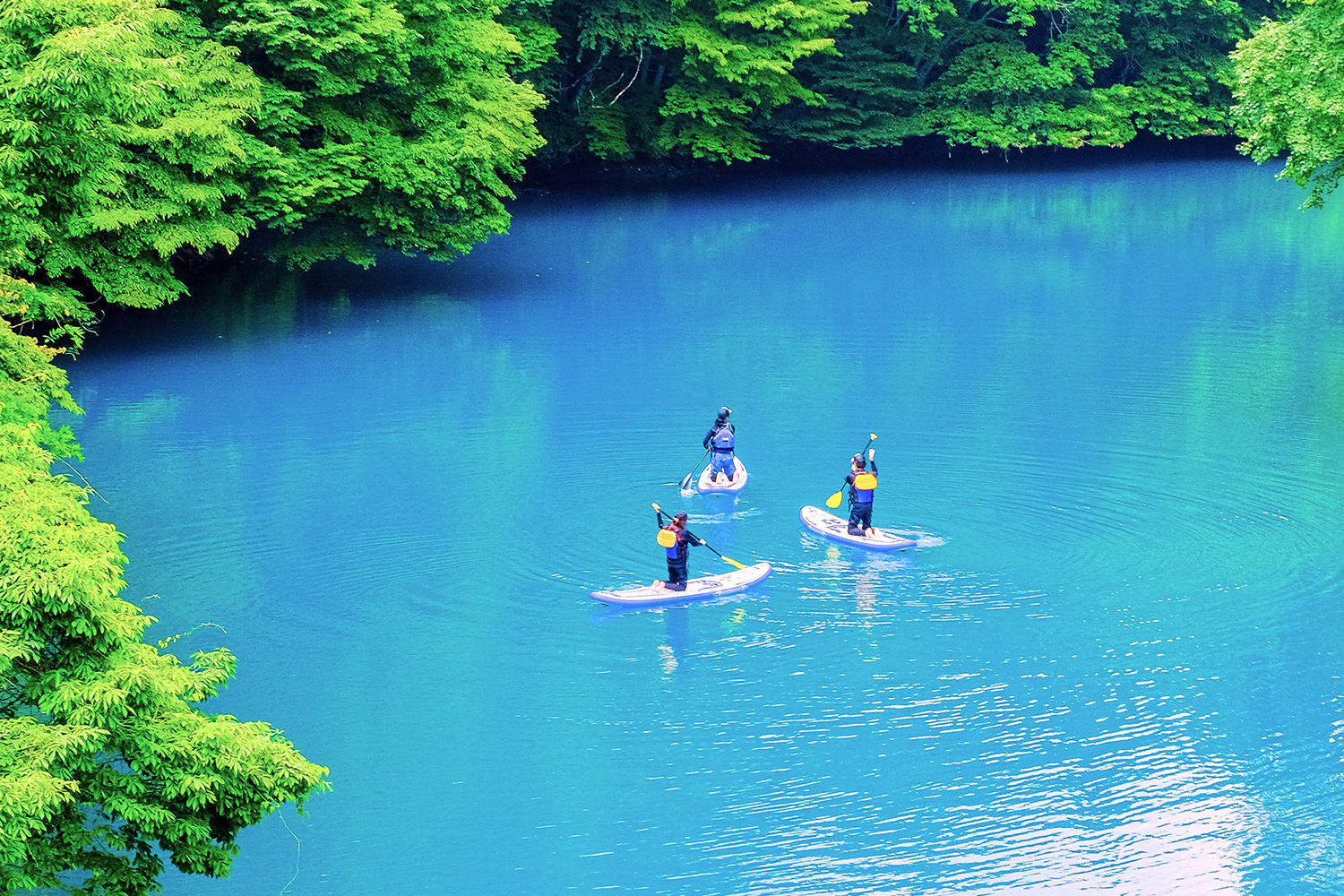STORY
Eight Traditional Onsen Experiences in Kusatsu Onsen
Embrace tradition at this famous onsen resort
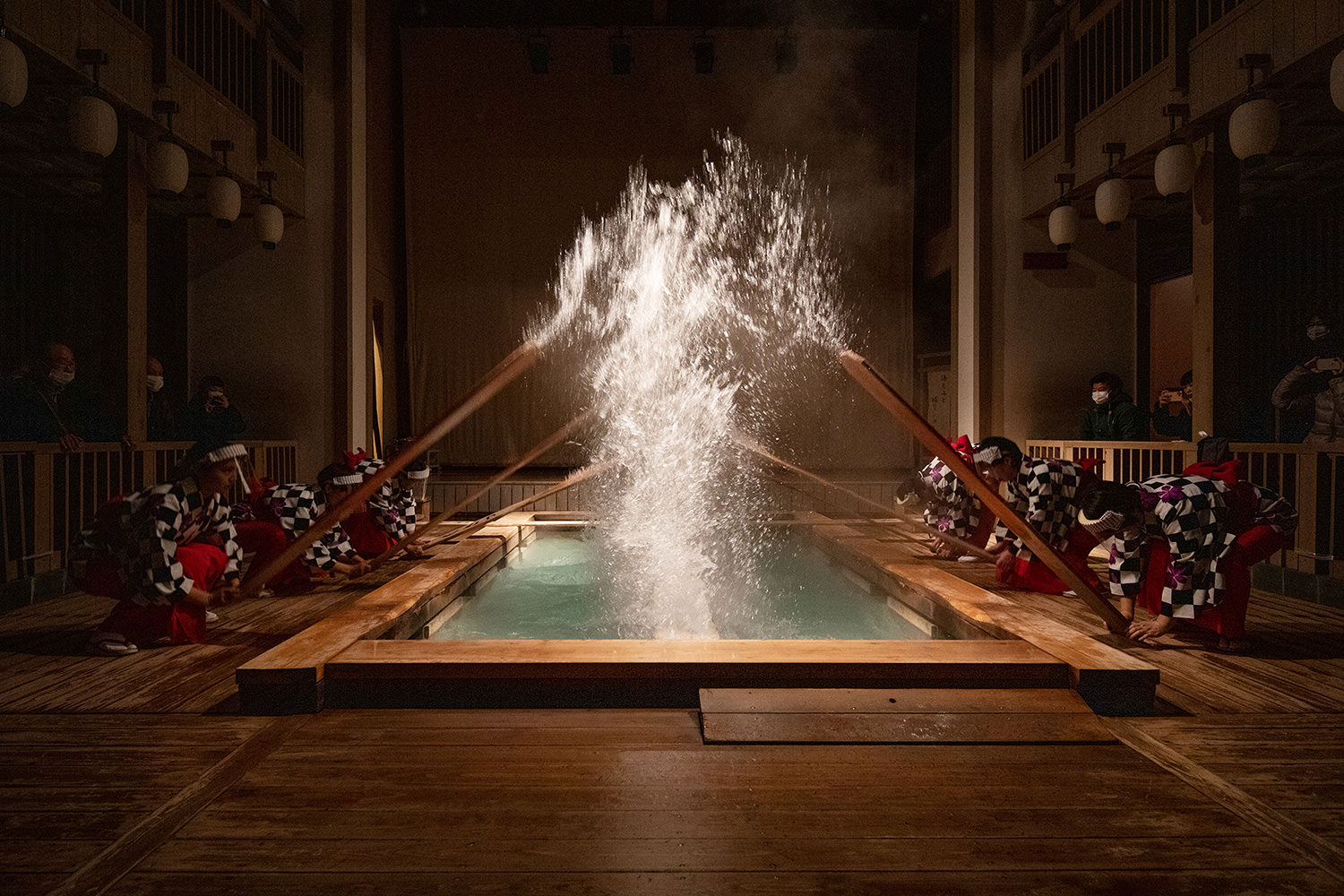
Last updated: June 16, 2021
Traditions are held in high esteem in Kusatsu Onsen, where life revolves around its hot spring—quite literally. The center of the town is dominated by Yubatake, a large hot water field where water cools before being piped to nearby bathhouses and ryokan inns. These hot, acidic, mineral-rich waters are purported by local legend to be able to cure any disease but lovesickness. Embrace Kusatsu’s traditions as you stroll the atmospheric streets, bathe in styles unique to Kusatsu, and take in cultural performances.



















